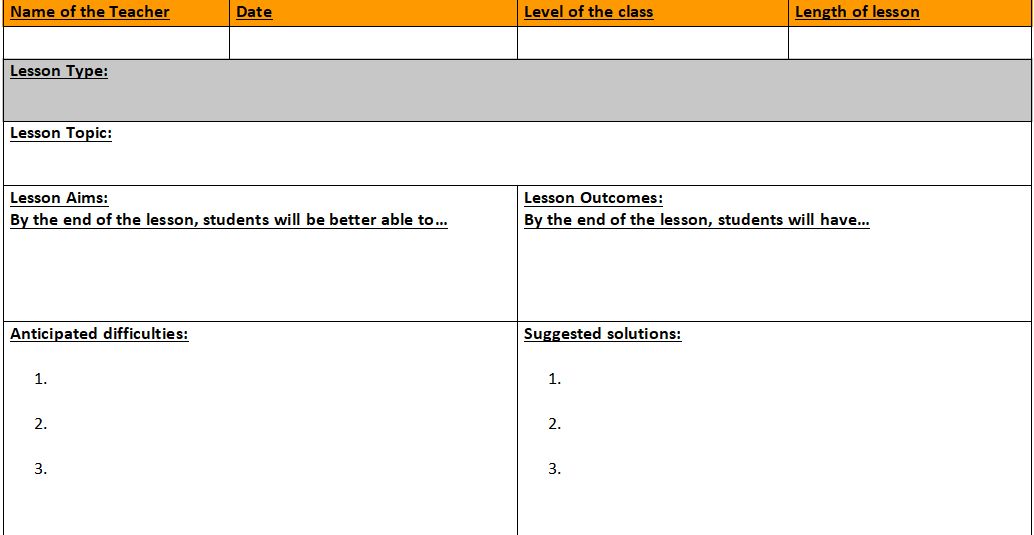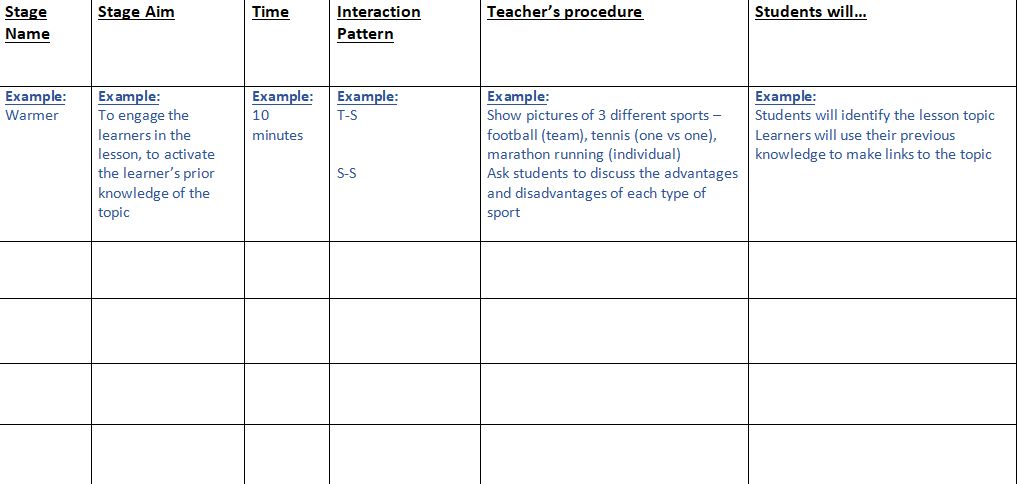Create a lesson plan for a teaching
- Country :
Australia
CRITERIA FOR ASSIGNMENT 2
Meets criteria?
Specifification
Write clear aims and outcomes for the lesson, which include the target grammar in an example sentence.
Remember that the aim is what you want your students to learn and the outcome is how they will go about doing that. The clearer you are on your aims/outcomes, the easier it will be to show how you will meet them successfully.
Design a lesson which will work effectively for Young Learners.
Refer back to Unit 8 Task and think carefully about what will work for the age group 11 12.
Anticipate diffificulties both in relation to the learners and their L1/age/level and to the target language.
What will be problematic, do you think, in terms of them being from 3 different language groups? Which part of the grammar point do you think they may struggle with? Be sure to give details on what these diffificulties may be in the Anticipated Diffificulties box on your assignment.
Provide relevant solutions to the anticipated diffificulties.
How will you deal with the challenges that may arise? What will you do in your lesson that will help your students to overcome these diffificulties? Explain that clearly.
Analyse the target language, showing a clear understanding of key grammar terminology and the form and function of the target language.
You will need to explain the grammar structures clearly in your plan for example, the positive/negative/question form how it is used, is there a contraction in the negative? This is the nuts and bolts part of the grammar point and you know to know how to present it.
Create a clear context for the language to be introduced.
Just because it is grammar, dont forget your TEFL principles introduce new language within a context, make it interactive, get your students engaging so what is a good context for the grammar point you are covering? Why is it a good context?
Stage a lesson which will achieve the lesson aims and include a variety of grammar-focused tasks which focus on communication between students.
How will the activities and tasks of your lesson achieve the aims? How will you get your students talking and using the language point?
Create, adapt or source grammar-focused activities which will help achieve the lesson aims.
Dont forget to include ALL the resources you mention in your lesson! Be clear where you found them even the images (eg. Google images) in your bibliography.
Write a clear procedure such that a colleague could pick up the lesson plan and teach a very good lesson from it.
What would you need to know if you were in the position of having to teach a colleagues class? How detailed would it need to be for you to feel comfortable? Include that.
Give appropriate timings for the stages.
How long will each activity take? Does it all add up to 1 hour?
Include interaction patterns which are suitable for the tasks and varied throughout the lesson.
Try to keep it diverse: so teacher to student/pair work/group work etc. It helps to keep the learning flfluid and interesting.
Provide relevant justifification for the inclusion of each stage.
Why have you included every step? How does it add to the overall aims and outcomes of the lesson?
Include professionally-presented materials with references, if taken from outside sources. Also be sure to include any that you have made! Provide a rationale for the structure of the lesson and how the activities will help to achieve the lesson aims.
This is where you need to explain your thinking around each choice. The more specifific and thorough you can be here, the better.
Explain what you would do if activities did not work as planned as well as explain which other activities you considered including but didnt choose to use.
This is the space for your Plan B, which is very important to have at hand, as well as some of those ideas that you considered, but decided not to include and your reasons why.
Provide a bibliography where possible.

Authentic Text (insert reading text here or link to the listening recording)
Please include a rationale for why you have chosen this authentic material (approximately 100 words): Lesson Rationale (700-1000 words):

You should cover: why you have structured the lesson in the way that you have, what each activity will contribute towards the learning aims and how this will be achieved, other activities that you considered including and why you chose not to use them, what you would do if any of your activities didnt work in the way you have planned
Bibliography (if needed):

